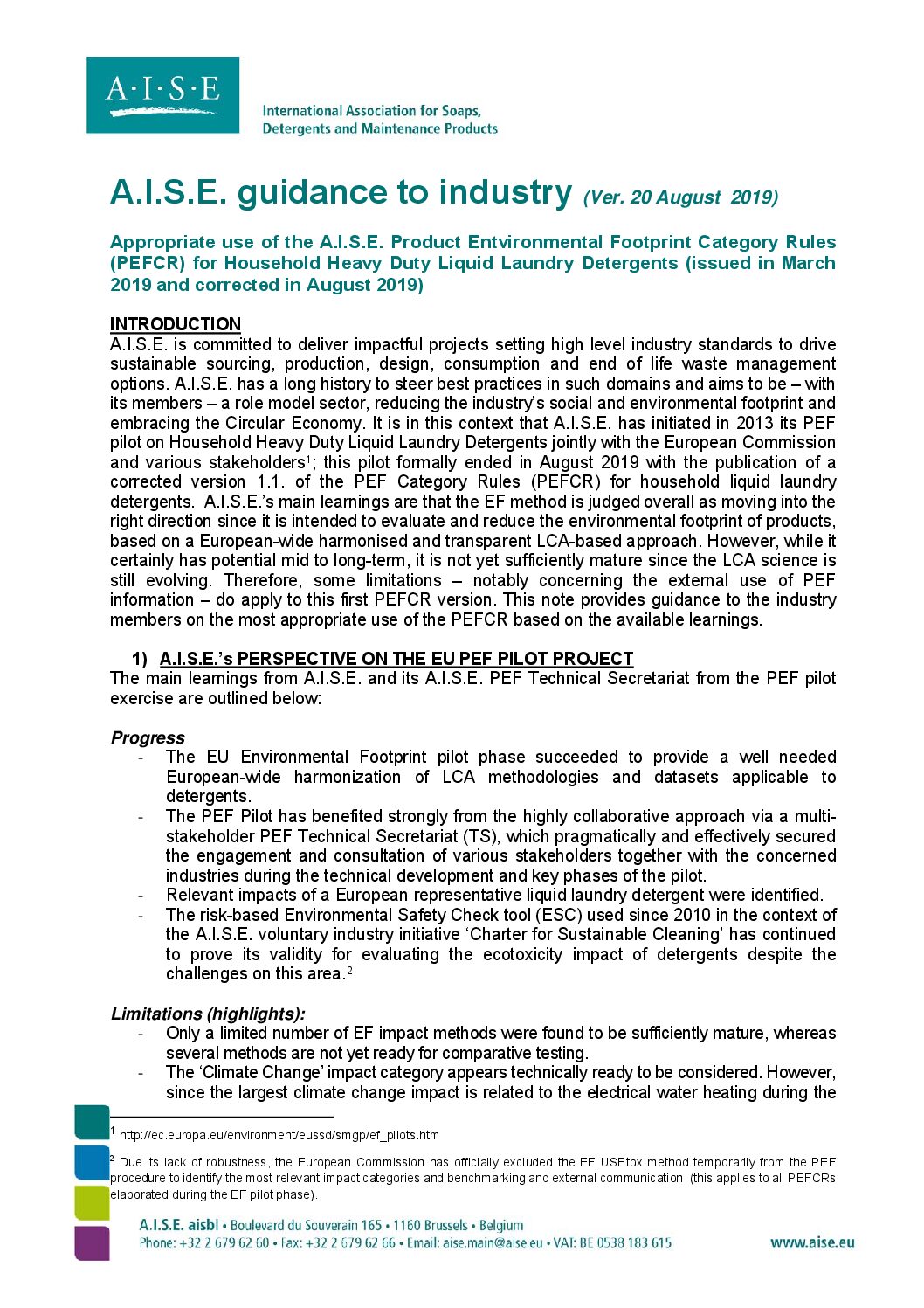The Product Environmental Footprint (PEF) is a lifecycle assessment based method proposed by the European Commission to assess the environmental impact of products. Its objective is to establish a common, harmonised approach with impacts that can be communicated to both consumers and professional users.
The PEF methodology calculates the potential environmental impacts of product production and consumption for 16 impact categories. However, there is as yet currently no agreed framework to communicate these results. A.I.S.E. took part in a European Commission PEF pilot project between 2013 and 2018, to evaluate the product footprint of heavy-duty liquid laundry detergents for machine applications.
A.I.S.E.’ s main learnings from the PEF pilot project are that while significant progress has been made, there are several impact methods in the current PEF methodology that are not sufficiently mature to support product comparisons. The method is too complex for routine application and needs further development. A.I.S.E. acknowledges the PEF method as moving in the right direction overall, with the intention to evaluate and reduce the environmental footprint of products based on a European-wide harmonised and transparent approach.
This project confirmed that the use phase of detergent products is the phase with the most significant environmental impact during the lifecycle of the product. This finding is in line with A.I.S.E.’s approach for nearly 30 years to guide consumers towards more sustainable washing and cleaning habits at home, through tips and advice on how correct application to save water, money, and CO2.
As an alternative, science-based approach, A.I.S.E. considers applying selected PEF components for environmental product comparisons such as the PEF impact assessment method for climate change, which is more mature than other methods.
A.I.S.E.’s PEF Category Rules (PEFCR) are product category-specific and life-cycle-based and complement the general methodological guidance for PEF studies by providing further specification at the level of a specific product category. Their purpose is to shift the focus towards those aspects and parameters that matter the most and should contribute to reproducibility and consistency based on comprehensive requirements defined by the European Commission. The final category rules for all industry sectors are published by the European Commission on DG ENV’s website.


